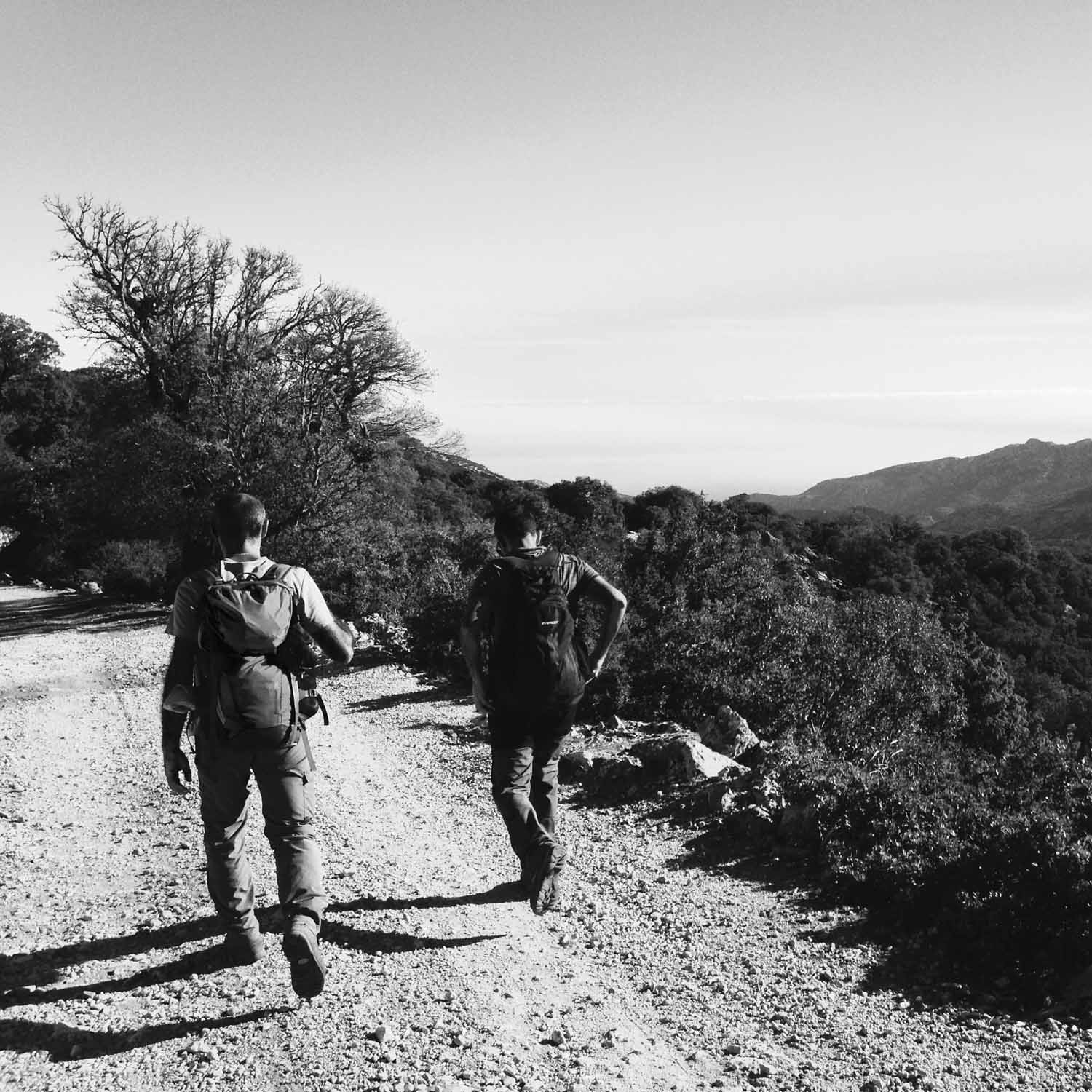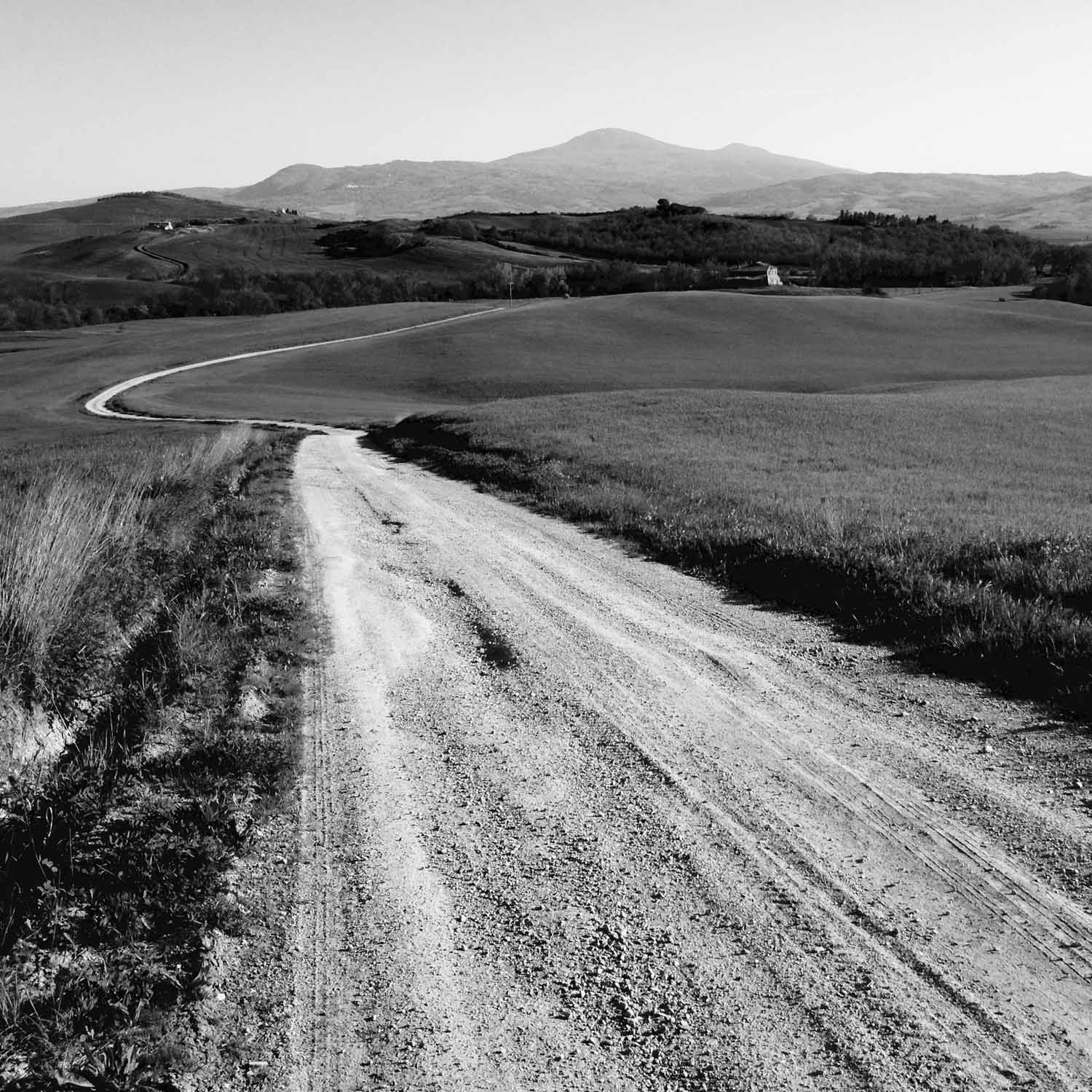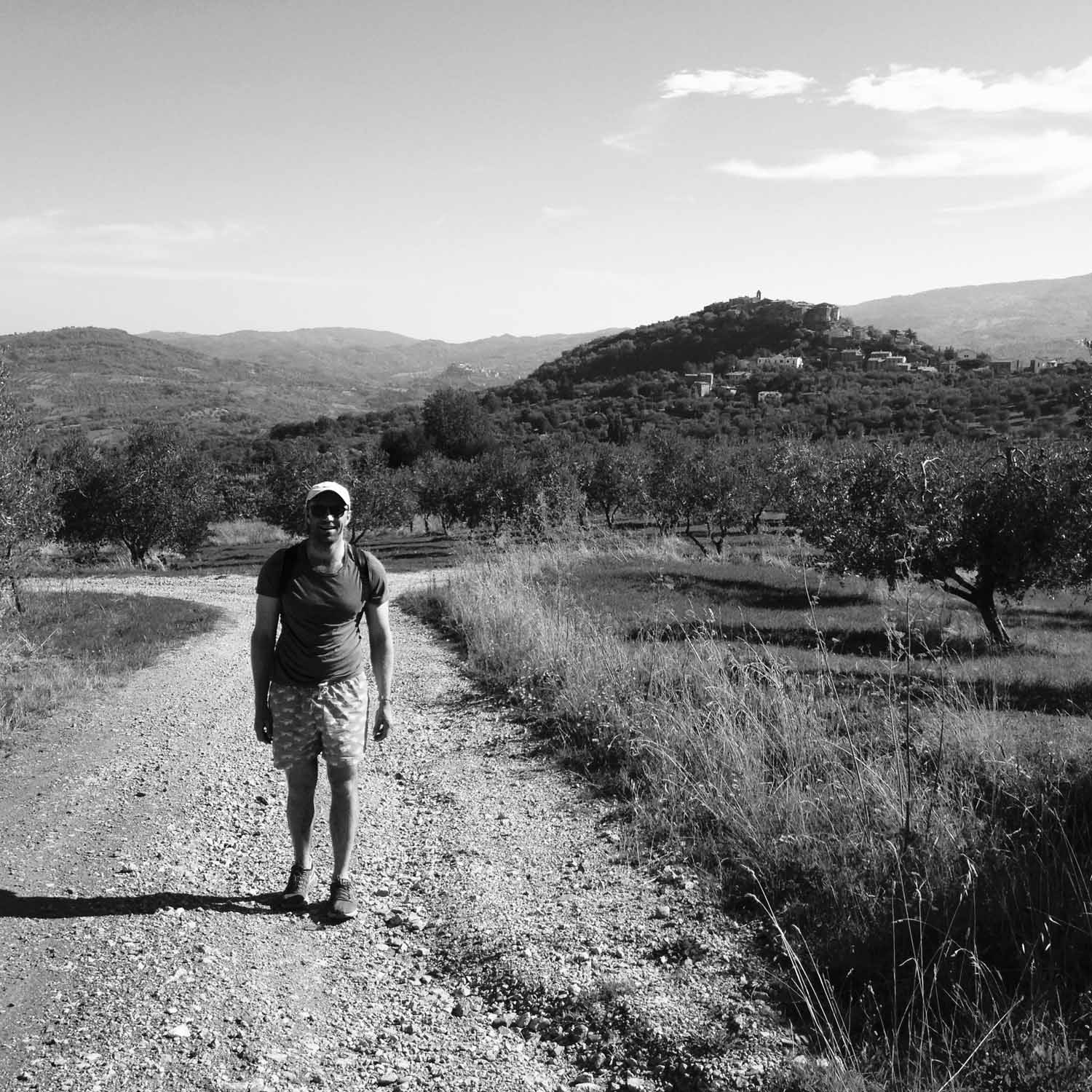A Theory of Walking (Part 2)
by Rudston Steward
nother of my favourite modes of walking is this: walking on a strada bianca in Tuscany.
Yes, there are dirt roads and gravel tracks all over the world, but I am in love above all with the white gravel roads of Tuscany. They are an integral part of this landscape: no Tuscan hike is complete without a stint along a quiet strada bianca, snaking sinuously through stands of holm oaks, around vineyards, between fields, across olive groves.
Each strada bianca—and there are loads of them around here—represents a small victory in the ongoing battle against asphalt: every stretch of gravel is an outpost of sanity, a holdout against the rising tide of tarmac and cement increasingly seeking to subjugate the rural Italian landscape.
Tarred roads are the harbingers of suburbia, the advanced scouting parties whereby the city wages its perpetual war on the countryside, literally steam-rollering nature and biodiversity in the name of so-called progress.
Asphalt is hands-down the most unforgiving surface to walk on: your feet ache, your bones rattle, your head goes numb, every approaching car is a loaded bullet to dodge, the sun reflects off the road like a hangover, you get hot and bothered and sweaty. Walking on a tar road is my idea of hiking hell.
A good strada bianca, on the other hand, is almost voluptuous in its curvature; it has character; it tells a story; it blends into its surrounds so that you sometimes can’t tell where the road ends and the fields begin; you must pick your path along it, onto rocks, around puddles, over leaves; its compact sand absorbs your stride, gives way, crumbles, keeping your feet alert and responsive. On a strada bianca you are in dialogue with the surface of the earth.
A strada bianca is wonderfully changeable, its integrity constantly challenged by random channels of water, errant gusts of wind, lost stampeding boar, stray cats, stray bats, columns of insects, columns of cyclists, tentacles of brambles and tendrils of vine. In short, a strada bianca is alive and kicking—unlike evil asphalt, which is like death laid down and strung out horizontally, mile upon deadly mile…
A GOOD STRADA BIANCA, ON THE OTHER HAND, IS ALMOST VOLUPTUOUS IN ITS CURVATURE; IT HAS CHARACTER; IT TELLS A STORY
Where I live, between the Monte Amiata and the Maremma, some of the oldest routes connecting the mountain to the coast are cart tracks that today live on as strade bianche. Many have disappeared, unused and overgrown, but others survive: their spines are riveted with cobbles, the furrows of donkey’s hooves and the ruts of wagon wheels etched deeply into stone.
Walking these roads takes you forward in space but also backwards in time, connecting you to all who have walked the same road in the past, in the early days usually along the Via Francigena pilgrimage trail to the Abbey of San Salvatore en route to Rome—tramping merchants and farmers and woodsmen and priests. Plus soldiers and brigands, cops and robbers, Fascists and Communists, pimps and prostitutes, all ducking and diving into the Mediterranean macchia over the ages, shrouded in the same delicate strada bianca dust.
By night strade bianche reflect even minimal moonlight, so they are easy to follow home in the dark. The fact that you can’t really see your surroundings amplifies sound: the characteristic crunching noise this gravel makes underfoot becomes sonorous, as if you’re walking on pleasantly gritty ice-cubes, crushing them percussively into the earth with every step.
Last night it was very dark on my walk back home, long after midnight, but the nightingales were out in force, and my crunchy footsteps beat out a rhythm for their songs. I counted them as I walked: one in the hedge behind the barn; one in the field towards Paganico; one in the olives high on the hillside; another down low by the Ombrone River. One seemingly in the middle of the road itself: its song silenced mid-riff as I drew near, then resumed when I’d passed—whether out of respect for a fellow musician or fear I’m not quite sure.
A strange nocturnal conversation: the nightingales, the faintest gleam of moonlight, and my percussive footfall—arranged as if by design upon the luminous musical score of the strada bianca that bound us together. The strada bianca our common ground, leading me home, a pale ribbon of song in the dark Tuscan night, walking on.
2 Comments
Comments are closed.








Canada calling:
Nice read fellow! I can hear the crunching underfoot in the dark glow of the gravel.
Hope you are well, Rudston.
Great writer ! Makes me want to, and wish that I could be there.